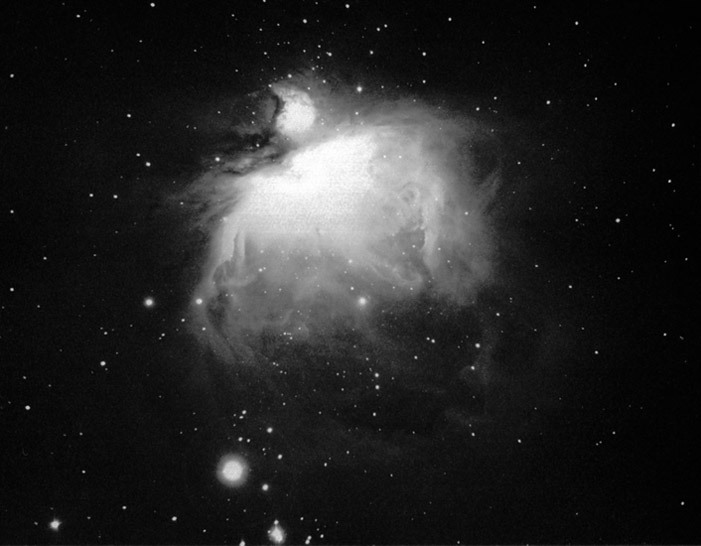

The Great Orion Nebula is a cloud of gas and dust visible
even to the naked eye at clear winter nights as a dim spot south of the
belt-stars of Orion. Binoculars reveal its fuzzy appearance, and a mid-sized
amateur telescope shows delicate detail. The astrophotographer faces a
major problem due to the remarkable contrast between the bright core and
the faint outer filaments.
The cloud consists mostly of hydrogen gas and dust
from heavier elements. These elements are called "metals" by astronomers,
although they are no metals in chemical terms. They were all formed previosly
in stars by nuclear fusion. These stars collapsed after running out of
hydrogen and helium fuel and ejected much of their material into space.
This cloud in turn is a cradle of stars itself. Unfortunately,
the nebula's dust prevents direct observation of the protostars forming
within the cloud. But Hubble Space Telescope pictures taken in infrared
light, which passes through this dark matter more easily, have unveiled
new stars in the stage of formation. The model of accretion disks, the
standard model for solar system formation, could be proved with these observations.